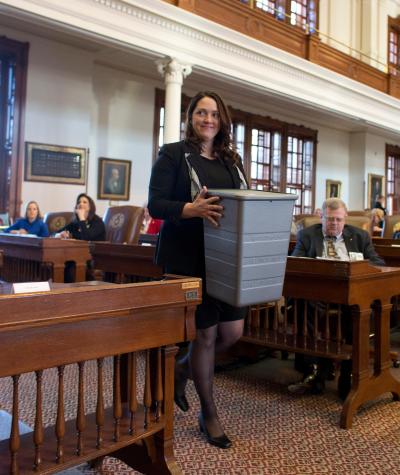Our nation, and our elections, have changed dramatically in 130 years. As our country has moved from the 19th, through the 20th and into the 21st century, one dated piece of legislation continues to govern the critical process of casting and counting electoral votes: the Electoral Count Act (ECA).
What is the Electoral Count Act?
The president and vice president are chosen by the Electoral College, which is composed of electors from each state. When Americans cast their votes for president, they do not do so directly; instead, they vote for their state’s slate of electors. After Election Day, electors meet in their respective states to cast their electoral votes and send their votes to Congress. Congress’s role is to count the electoral votes.
The Electoral Count Act of 1887 provides the primary legal framework for casting and counting electoral votes. The law is important because it sets a timeline for selecting electors and transmitting their votes to Congress. The ECA also establishes procedures for how Congress counts the electoral votes.
What is the problem with the Electoral Count Act?
The ECA has not been updated since its enactment more than 130 years ago, and it is rife with gaps and ambiguities that make it confusing. Critically, the imprecise language allows for multiple interpretations of key terms. For example:
- The ECA sets a national election day per the Constitution, but the law is ambiguous as to what sorts of exceptions could allow states to choose their electoral college members after Election Day.
- The ECA makes it too easy for individual members of Congress to try to throw out a state’s results.
- The ECA supposedly allows states to resolve their own election results and contests but has no enforcement mechanism to protect those resolutions.
- The ECA does not have a clear and concise process for resolving disputes if Congress deadlocks when it meets every four years to tally the electoral votes.
Who can update the Electoral Count Act – and how?
Congress has the power to modernize the ECA and bring the law into the 21st century. The best way to do this would be to:
- Clarify the role of the vice president and Congress in counting electoral votes.
- Define rules and procedures for objections in counting electoral votes, and raise the threshold for objections.
- Establish clear timetables.
- Articulate appropriate processes for resolving post-election disputes.
Congress must act to modernize the ECA and ensure this vital piece of our election framework can meet the challenges of today.
